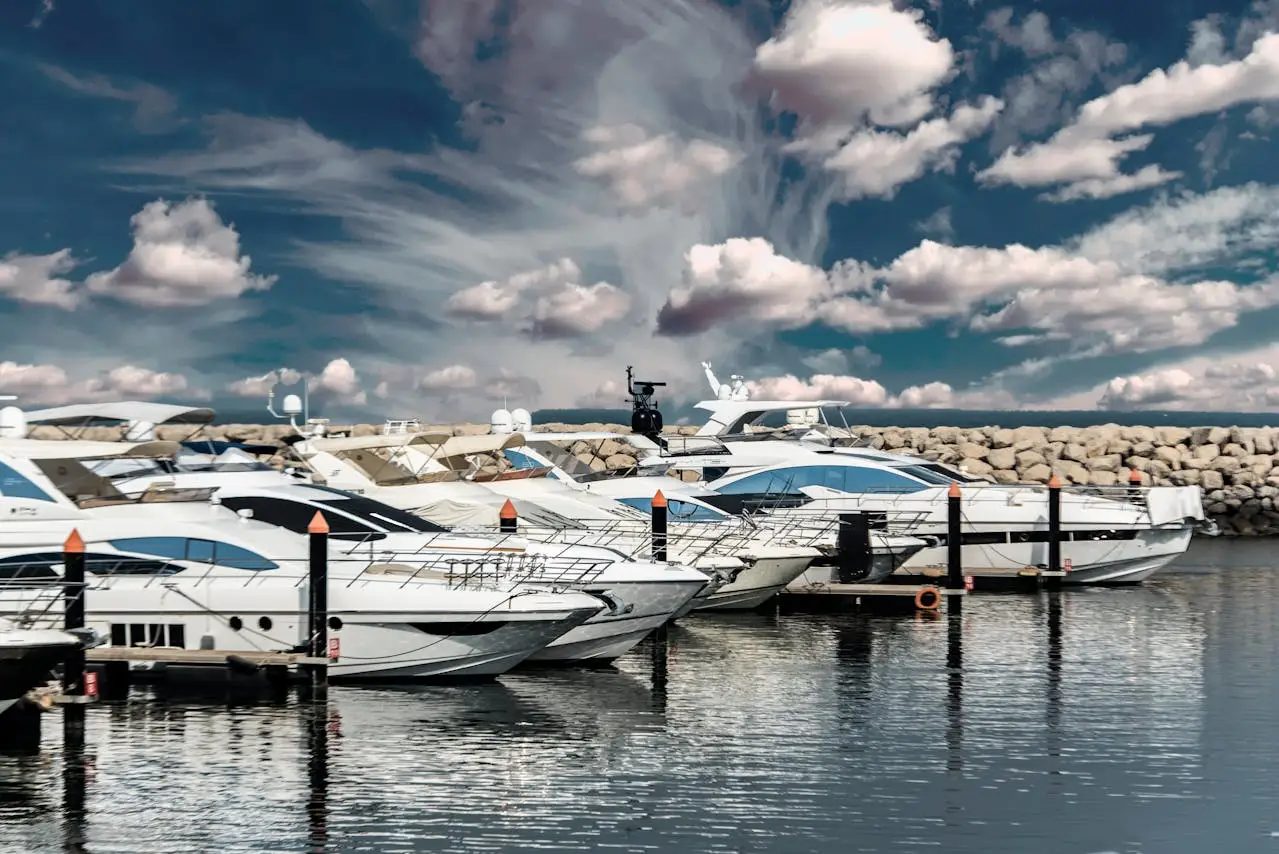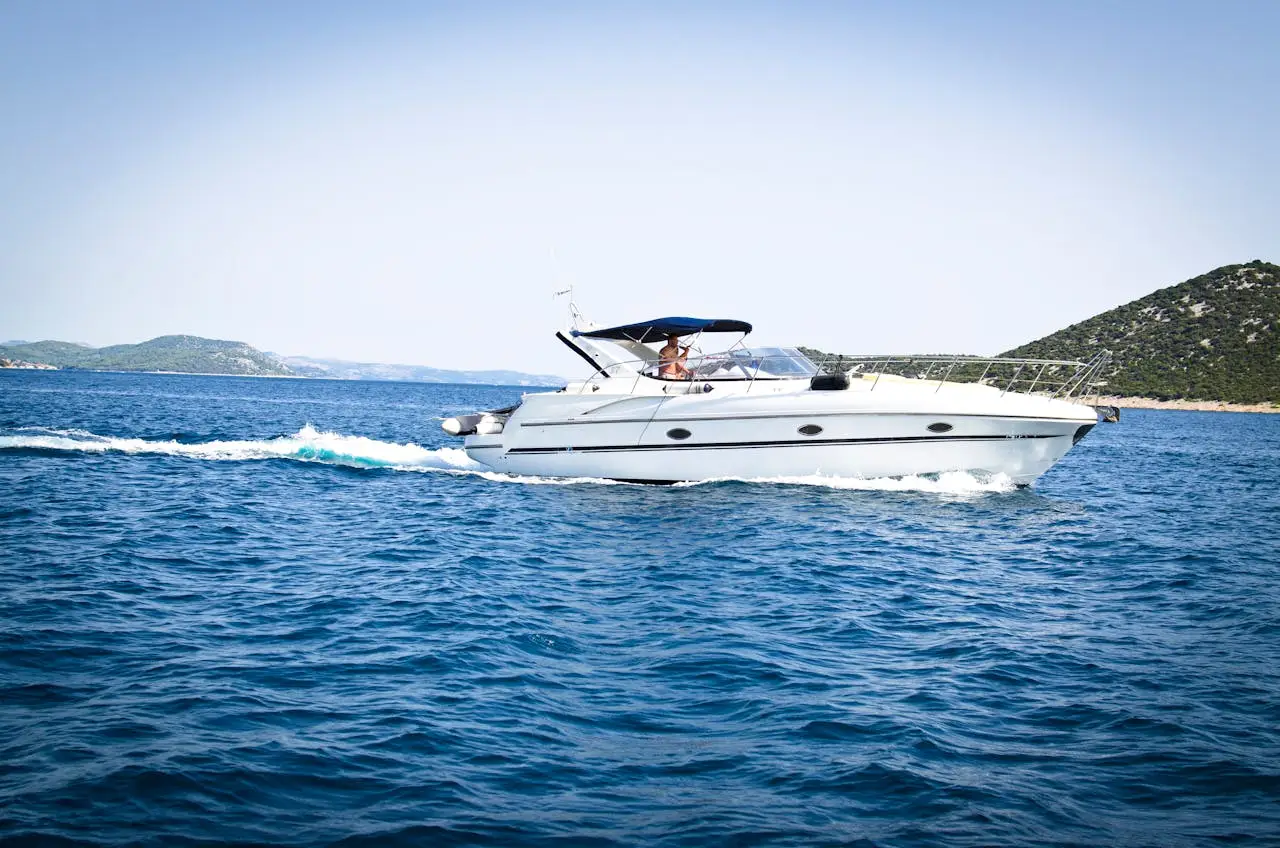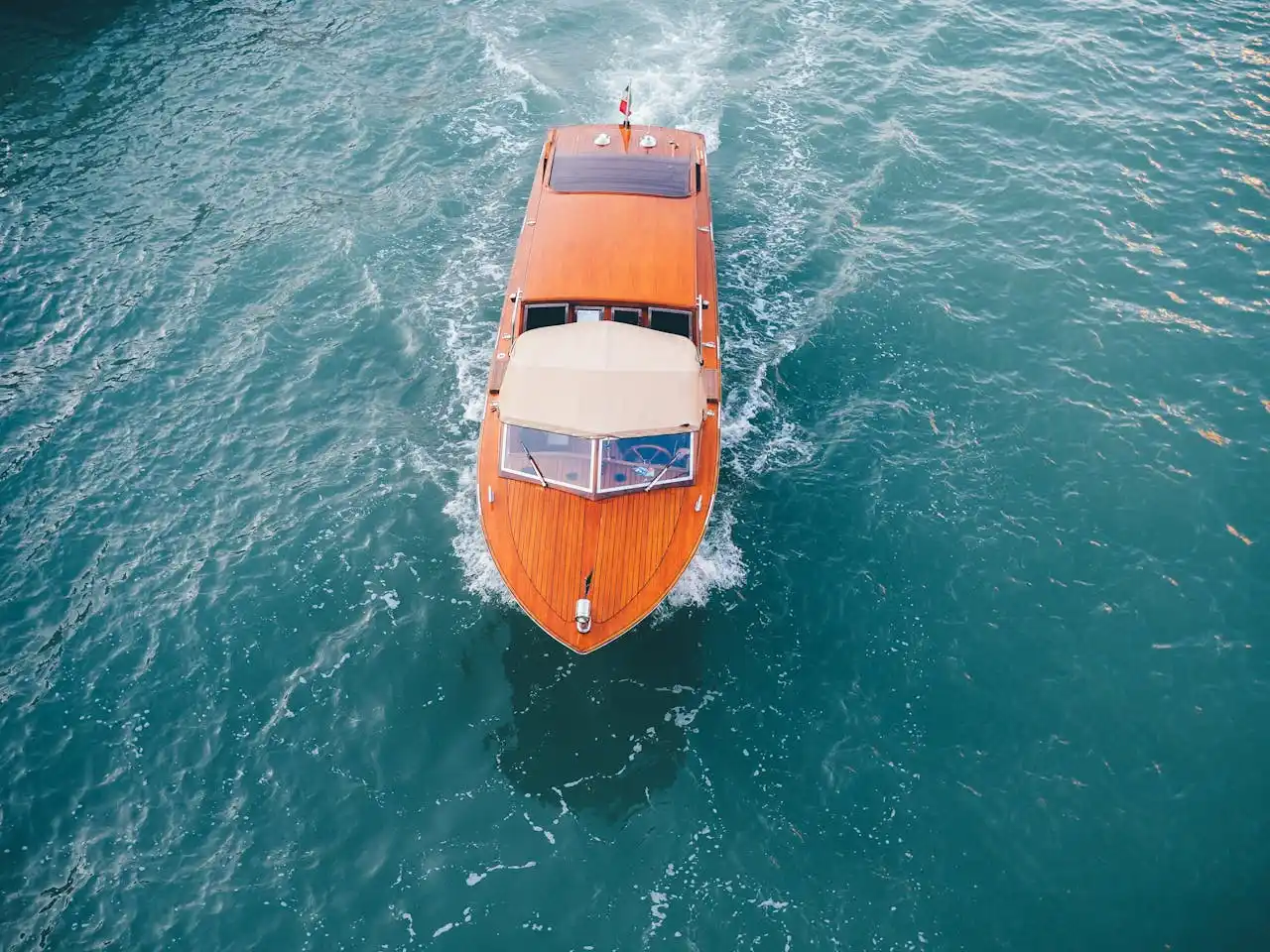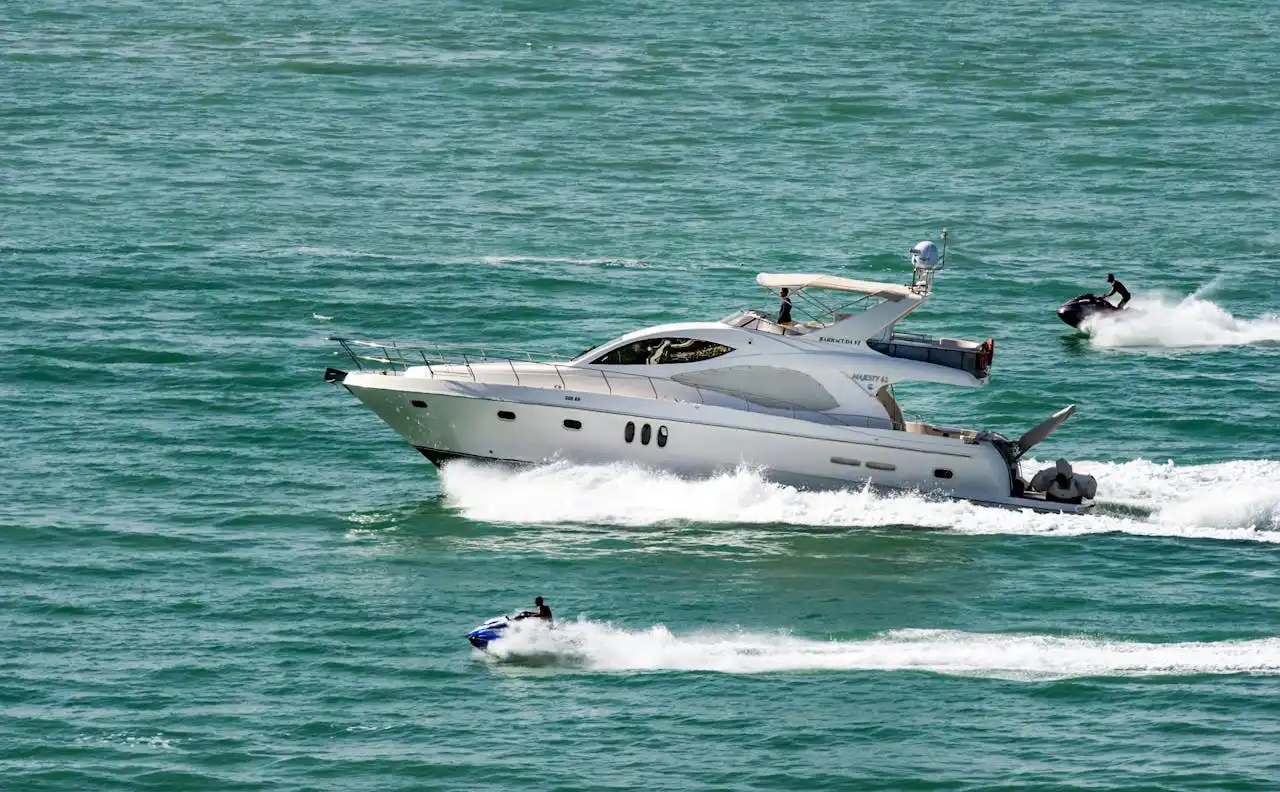To be honest, my serious interest in yacht ownership didn't stem from sudden wealth or some desire for status symbols. It began with a completely serendipitous experience.
It was a summer day three years ago, with perfect weather and a perfectly calm sea. Sitting with friends at a harbor café, we watched as a 60-foot luxury yacht was slowly lowered back into the water by a crane. The hull glistened in the sunlight, freshly coated with antifouling paint. Droplets of water cascaded down the keel from the ship's bottom. The scene wasn't breathtaking, but it was utterly captivating. In that moment, I felt something profoundly direct: owning a vessel like that seemed genuinely capable of transforming life.
I remember the expression on the owner's face as he stood beside the boat—not mere joy, but the relief of finally wrapping up another hassle. He later shared a line with us that has stuck with me ever since:
“Buying a boat takes a second; maintaining it takes a lifetime.”
At the time, I laughed it off as an exaggeration. But the more I learned and the more boat owners I met, the truer those words rang. Especially now, in 2025, with the yacht market hotter than ever. Many wonder how many yachts are there in the world or how much does it cost to own a yacht, and the internet is flooded with slogans like “Yachts aren't just toys for the wealthy—they're a lifestyle you can embrace too.”
But honestly, what many people truly don't understand is this: buying a boat isn't the hard part—the real challenge lies in how much you're willing to invest in it year after year. If you've ever had that fleeting thought, “I want my own boat,” then this article is exactly what you need. It will show you the yacht ownership cost breakdown 2025.
Table of Contents
Yacht Purchase Costs
Yacht Maintenance Costs
Yacht Berthing Fees
Yacht Depreciation Rate
Cost-Saving Recommendations & Decision Tree
Conclusion

Yacht Purchase Costs
Configuration Impacts Price
The most common misconception is that buying a boat is like buying a car—you glance at the price list and know if it's affordable. But yachts aren't like that. A yacht's price is like building blocks—add one feature, switch to a different engine, upgrade the navigation system, choose better interior finishes, and the price keeps climbing.
Time and again, I've heard people say: “Don't think you're just buying a boat. You're actually buying a system that determines every single one of your boating experiences.”
It took me a while to grasp that statement.
Take engines, for instance. The same model boat can be fitted with two different powertrains, each affecting cruising fuel efficiency, speed, noise levels, and vibration feel in entirely different ways. If you're covering long routes or island-hopping, the powertrain becomes the key to sailing with confidence. But if you're mainly cruising coastal waters and prioritize low fuel consumption and quiet operation, you'd choose the other setup.
Take a 48-foot yacht: upgrading from a 380hp to a 600hp engine instantly adds $200,000–$600,000. Factor in radar, a watermaker, bridge sunshades, and audio upgrades, and you're looking at another $150,000–$700,000. Bottom line: define your usage scenario first, then configure the specs.

New vs. Used: Which is Better?
Honestly, there's no one-size-fits-all answer—it depends entirely on what suits you best. Of course, familiarizing yourself with tips for buying a new yacht or a used yacht can help you get started faster.
Take 40–60 foot luxury yachts, for example—currently the most popular size range among private owners in Asia, Europe, and the Middle East. According to Boat International's 2024 Global Order Book, custom and production orders in this segment are growing fastest. In other words: yachts in this size range are hot commodities right now, and prices won't be low.
Looking at market averages:
| Type | Price Range | Features |
| New Yachts 40–60 ft | ¥3.5 million–¥20 million+ | Customizable options, full warranty coverage, extended delivery lead time |
| Used Yachts 40–60 ft | ¥1.6 million–¥9 million | Lower cost, wide variation in condition, thorough inspection essential |
Therefore, my recommendations are:
- If you have ample budget and high standards for aesthetics and details → Purchase a new yacht
- If your budget is limited but you're willing to invest time learning → Buying a pre-owned yacht offers the best value
Taxes and Import/Registration Costs
For imported vessels, costs include customs duties, value-added tax (VAT), local outfitting expenses, and inspection/registration fees. Regional variations are significant—I won't elaborate here, but a general rule applies:
Import = Purchase Price × (15%–40%) Additional Taxes
Consequently, many owners opt to purchase pre-registered yachts directly from the used market—a far more convenient approach. Would this factor influence your decision toward a pre-owned yacht?

Yacht Maintenance Costs
This section demands absolute transparency. While purchasing a vessel is a one-time expense, operating and maintenance costs recur annually. Let's start with the most tangible: fuel. According to the U.S. Energy Information Administration (EIA), marine diesel prices consistently fluctuate within a high-range band. This means frequent sailing inevitably leads to substantial fuel expenditures, with usage patterns directly influencing your fuel costs.
A 55–65-foot powerboat typically consumes 80–180 liters of diesel per hour at cruising speed. If you sail 100 hours annually:
100 hours × average fuel consumption 120 liters/hour × diesel price = annual fuel cost
This easily adds up to $10,000–20,000 at minimum, and $50,000–60,000 is perfectly normal. If you say, “I don't sail that much; I mainly keep it docked as a floating living room,” then your largest annual expenses will shift to maintenance and berthing fees.
A yacht at sea will literally fall ill without maintenance. This isn't a metaphor. Seawater, humidity, and salt cause metal oxidation, electrical corrosion, wood warping, and paint peeling—not as a matter of choice, but as an inevitable consequence.
Therefore, annually you must perform:
- Engine oil and filter changes
- Hull antifouling paint application
- Generator maintenance
- Cleaning of air conditioning, water pumps, and freshwater systems
- Hull polishing and sealant inspection
Neglecting these tasks risks a sudden “massive maintenance bill” one year—expenditures you simply cannot avoid. I've seen boats skip annual antifouling only to have hull growth reduce propulsion efficiency by 40% the next year, doubling fuel consumption. I've also witnessed aging wiring go undetected, causing navigation systems to fail mid-voyage and nearly causing a disaster.
My stance is now unwavering: maintenance costs aren't about “whether to spend,” but whether you choose steady, manageable annual payments or a painful lump sum years later.
Then there's insurance. Yacht insurance isn't as cheap as car insurance. Pantaenius, a global yacht insurer, explains: Premiums are influenced by vessel age, sailing region, owner experience, and past incidents, typically ranging from 1.2% to 3.5% of the boat's value annually. Simply put, the older the yacht, the higher the premium.
If you operate in typhoon-prone or storm-prone areas, you must also comply with the insurer's designated risk avoidance rules. Failure to do so may void your coverage! For more details on yacht insurance, this 2025 Yacht Insurance Guide is worth a thorough read.

Yacht Berthing Fees
Boats don't park at your doorstep—they need a berth. And the price of that berth speaks volumes: whether you treat your yacht as a lifestyle or merely an occasional toy.
A good berth means:
- Close to where you live
- Just a 20-minute walk when you want to head out to sea
- Regular ventilation and engine checks by on-site staff
- Convenient access to water transfer, shore power, and water refilling
But these advantages come at a premium. According to Marinas.com's global marina database, the most expensive locations include Hong Kong, Monaco, Nice, and Miami. Below is a reference list of annual fees for 40–60 foot berths:
| area | Annual fee range |
| ordinary coastal cities | ¥18,000–¥60,000 |
| First-tier popular ports | ¥70,000–¥180,000 |
| Popular international yacht ports | ¥200,000–¥600,000 |
In short, berthing fees = the cost of your boat's location!
If you park your boat at a marina two hours away just to save money, I guarantee you'll use it less each year. Because every time you head out, you'll face too many extra preparations.
I've seen this happen to many people: it's not that they get bored with boating, but the high barrier to use gradually makes them stop. And when a boat sits idle, that's when accelerated deterioration begins. This reality is brutal, but undeniably true.

Yacht Depreciation Rate
Regarding yacht depreciation, I've developed a firm understanding: yachts don't appreciate like real estate—they inevitably depreciate. Based on my market observations, new yachts depreciate most rapidly in the first three years, at an annual rate of approximately 8%–15%. Well-maintained branded vessels can retain 50%–70% of their value after five years.
Yet depreciation isn't a loss—it buys you:
• Weekends spent at sea with family
• Sunsets sipped with friends on deck
• The freedom to sail solo for solace
• The space and breathing room you reserve for yourself
I've seen boat owners silently smiling at sunset while cruising—a scene more sophisticated than any luxury item.
I've also seen owners who sailed less than three times a year, ending up with just one thought when selling: “Excited when buying, annoyed when using.”
This led me to the most crucial insight about yacht ownership: It's not about whether you can afford it, but whether you genuinely want to spend time at sea.
If you use it less than 20 days annually, chartering is actually more economical. If you can consistently use it 50–80 days per year, then owning not only makes sense but is worthwhile. What do you think?

Cost-Saving Recommendations & Decision Tree
Finally, many have asked me: Would you rather charter or buy a yacht? This inevitably comes down to usage frequency. For me:
| Usage Frequency | Recommended Approach |
| < 20 days/year | Leasing is more cost-effective |
| 20–60 days/year | Shared/Partnership ownership |
| > 60 days/year | Purchase offers best cost efficiency |
To minimize long-term costs, here are three practical strategies:
- Choose fuel-efficient displacement/semi-displacement hull types
- Avoid over-equipping with rarely-used entertainment systems
- Utilize part-time crew + professional marina maintenance
FAQ
Q 1: How much does it cost to own a yacht annually?
A:That’s one of the most common questions potential owners ask—and the truth is, there’s no single answer. According to the latest yacht ownership cost breakdown 2025, the total annual expense usually equals 10%–20% of your yacht’s value. This figure includes yacht maintenance costs, yacht berthing fees, insurance, and fuel. For a 50-foot vessel worth around ¥10 million, that means roughly ¥1–2 million per year.
Your yacht maintenance budget will also depend on how often you sail, where you berth, and how meticulously you maintain your systems. The more frequently you use the boat, the more essential it becomes to plan for recurring maintenance and fuel.
Q 2: How can I reduce yacht maintenance costs without compromising safety?
A:The key lies in smart planning rather than cutting corners. You can lower your yacht maintenance costs by following a preventive schedule instead of reacting to problems. Using high-quality antifouling coatings, keeping the hull clean, and regularly checking electrical systems prevents expensive future repairs.
Also, consider storing your boat in a marina that includes routine care within its yacht berthing fees—many modern marinas offer professional cleaning, engine checks, and system inspections. Finally, if you use your yacht less than 50 days a year, partnering with another owner or joining a shared ownership program can make your yacht maintenance budget far more efficient.
Q 3: What is the typical yacht depreciation rate, and does it affect resale value?
A:Every yacht owner eventually faces depreciation—it’s part of the reality of boating. On average, the yacht depreciation rate ranges from 8% to 15% per year during the first three years, depending on brand reputation, condition, and maintenance history.
However, depreciation doesn’t mean loss—it reflects how your vessel ages relative to use and care. A well-maintained yacht with complete service records can retain 60–70% of its value after five years. In other words, the money you spend on consistent maintenance and proper berthing isn’t wasted—it directly supports resale potential.
Understanding this helps answer the broader question of how much does it cost to own a yacht in the long term: ongoing care preserves not only your boat’s performance but also its market value.

Conclusion
Owning a luxury yacht is never a simple transaction—it's a long-term commitment requiring careful consideration. As we saw in our 2025 Detailed Analysis of the Cost of Owning a Luxury Yacht, the expenses extend far beyond the initial purchase price tag. From meticulously selected acquisition costs, ongoing maintenance, unavoidable berthing and insurance fees, to inevitable depreciation—each represents a tangible component of “life at sea.”
The core truth remains: A yacht's true value lies not in its price or brand, but in the irreplaceable moments it creates for you on the water!
About the Author
Linda possesses 12 years of experience in pre-owned yacht brokerage and navigation, having personally handled over a hundred pre-owned yacht transactions and sailed more than 2,000 nautical miles. She is a SAM-certified surveyor (ID: SAMS-10234) and holds NAMS certification (ID: NAMS-4587). Linda has contributed articles to renowned yachting publications such as Yachting Magazine and Boat International, and has been invited to present seminars on pre-owned yacht purchasing and surveying at multiple nautical associations. She specializes in pre-owned yacht acquisition, surveying techniques, and maritime safety, providing buyers with practical and reliable guidance.
Disclaimer
This content is for informational purposes only and does not constitute legal, financial, or professional investment advice. Before purchasing a yacht, readers are advised to conduct a comprehensive assessment independently or through professionals such as registered surveyors, maritime lawyers, or financial advisors. The author and this platform assume no liability for any direct or indirect losses arising from the use of this content. All case studies represent the author's personal experience sharing; actual circumstances may vary due to vessel type, regional regulations, and market fluctuations.